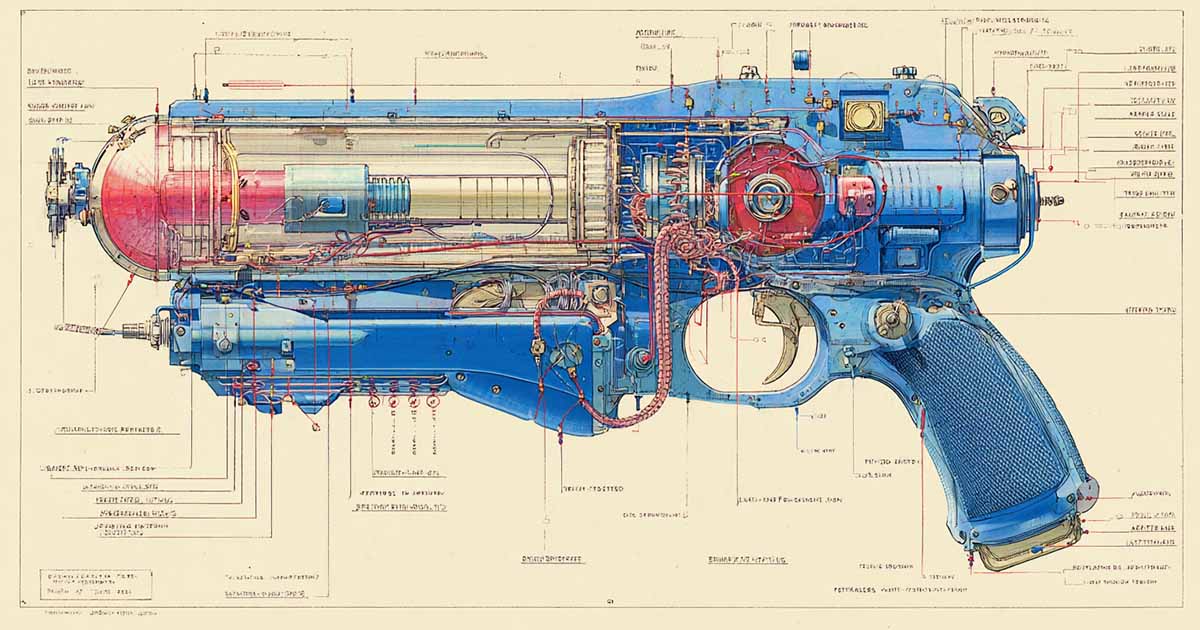What is a Blaster in Science Fiction?
The blaster in science fiction replaces the bullet with energy, serving as a symbol of futuristic conflict, authority, and the timeless presence of personal violence in imagined worlds.

The blaster is the default weapon of the future. Often shaped like a pistol or rifle, it fires a beam of energy instead of a bullet. It makes no smoke, leaves no shell casings, and rarely needs reloading. But in science fiction, the blaster is more than a weapon — it is a symbol of modernity, authority, and control over the unseen forces of the universe.
The Invention of Clean Violence
Blasters first appeared in pulp magazines and early serials. Writers needed futuristic versions of revolvers and rifles, and the idea of a handheld energy weapon fit the bill. These early ray guns fired beams of light, heat, or force, depending on the story. Over time, the name "blaster" stuck.
In most fiction, a blaster is not bound by gravity or chemistry. It uses advanced energy — plasma, lasers, or exotic radiation — to do its work. That vagueness is a strength. It frees the writer from technical detail while giving the reader something instantly familiar: a sidearm with a futuristic glow.
Not a Laser
Readers often confuse blasters with lasers. The two are different. Lasers emit focused light. Blasters, in most stories, do something more complex. They strike with concussive force, sear targets, and even explode on impact. In the world of "Star Wars," blasters fire high-energy plasma bolts. In "Buck Rogers" and "Flash Gordon," the weapons are simply ray guns with flair.
Lasers are clean and surgical. Blasters are loud and dangerous. The difference matters. Lasers feel clinical. Blasters feel personal.
A Tool of Power
In many stories, the blaster is not just a weapon—it is a mark of authority. Soldiers carry them. Lawmen wear them on their hips. Space pirates brandish them across airlocks. The presence of a blaster implies danger but also order. It can be used to restore peace or to disrupt it.
The blaster also solves a practical problem. It looks futuristic but functions like a six-shooter. Writers don't need to explain recoil, ballistics, or ammunition. The weapon becomes part of the furniture of science fiction—something the reader expects without questioning.
Danger in the Palm of a Hand
For all its technological trappings, the blaster is a weapon. It kills. It threatens. It turns every conversation into a potential standoff. Science fiction uses blasters to keep tension close and personal. A spaceship might explode in orbit, but the story's heart is still two men talking in a corridor — one with a blaster at his side.
Blasters make that drama possible. They are the equalizer. The shortcut. The great simplifier of difficult moments.
More Than a Ray Gun
In the end, the blaster remains because it works. It gives the future a sound, a flash, and a smell of danger. It reminds the reader that technology may change, but human conflict does not.
The sword became the musket. The musket became the revolver. The revolver became the blaster. And the man behind it still has a choice to make.

